Your company uses email, calendar, contact, and task services in Microsoft Outlook.com.
You purchase a Microsoft 365 subscription and plan to migrate all users from Outlook.com to Microsoft 365.
You need to identify which user data can be migrated to Microsoft 365.
Which type of data should you identify?
Answer:
B
You can use the Internet Message Access Protocol (IMAP) to migrate user email from Gmail, Exchange, Outlook.com, and other email systems that support IMAP migration. When you migrate the user's email by using IMAP migration, only the items in the users' inbox or other mail folders are migrated. Contacts, calendar items, and tasks can't be migrated with IMAP, but they can be by a user.
Reference:
https://docs.microsoft.com/en-us/exchange/mailbox-migration/mailbox-migration#migrate-email-from-another-imap-enabled-email-system
SIMULATION -
Please wait while the virtual machine loads. Once loaded, you may proceed to the lab section. This may take a few minutes, and the wait time will not be deducted from your overall test time.
When the Next button is available, click it to access the lab section. In this section, you will perform a set of tasks in a live environment. While most functionality will be available to you as it would be in a live environment, some functionality (e.g., copy and paste, ability to navigate to external websites) will not be possible by design.
Scoring is based on the outcome of performing the tasks stated in the lab. In other words, it doesn't matter how you accomplish the task, if you successfully perform it, you will earn credit for that task.
Labs are not timed separately, and this exam may have more than one lab that you must complete. You can use as much time as you would like to complete each lab. But, you should manage your time appropriately to ensure that you are able to complete the lab(s) and all other sections of the exam in the time provided.
Please note that once you submit your work by clicking the Next button within a lab, you will NOT be able to return to the lab.
You may now click next to proceed to the lab.
Lab information -
Use the following login credentials as needed:
To enter your username, place your cursor in the Sign in box and click on the username below.
To enter your password, place your cursor in the Enter password box and click on the password below.
Microsoft 365 Username: [email protected]
Microsoft 365 Password: xxxxxxxxxx
If the Microsoft 365 portal does not load successfully in the browser, press CTRL-K to reload the portal in a new browser tab.
The following information is for technical support purposes only:
Lab Instance: 111111111 -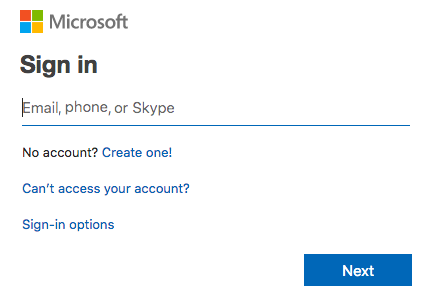
You need to prevent all the users in your organization from sending an out of office reply to external users.
To answer, sign in to the Microsoft 365 portal.
Answer:
See explanation below.
You need to modify the default remote domain. When you add a remote domain, you specify the domain name and the settings apply to that domain. The default remote domain applies to all other domains. Therefore, we need to disable Out of Office replies for external users in the settings of the default remote domain.
1. Go to the Exchange Admin Center.
2. Click Mail Flow in the left navigation pane.
3. Click on Remote Domains.
4. Select the default remote domain and click the Edit icon (pencil icon).
5. In the 'Out of Office automatic reply types' section, select 'None'.
6. Click Save to save to changes to the default remote domain.
Note: This question is part of a series of questions that present the same scenario. Each question in the series contains a unique solution that might meet the stated goals. Some question sets might have more than one correct solution, while others might not have a correct solution.
After you answer a question in this section, you will NOT be able to return to it. As a result, these questions will not appear in the review screen.
Your network contains an on-premises Active Directory domain named contoso.com. The domain contains the users shown in the following table.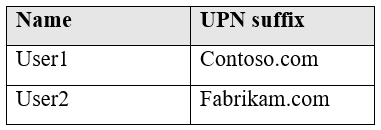
The domain syncs to an Azure Active Directory (Azure AD) tenant named contoso.com as shown in the exhibit.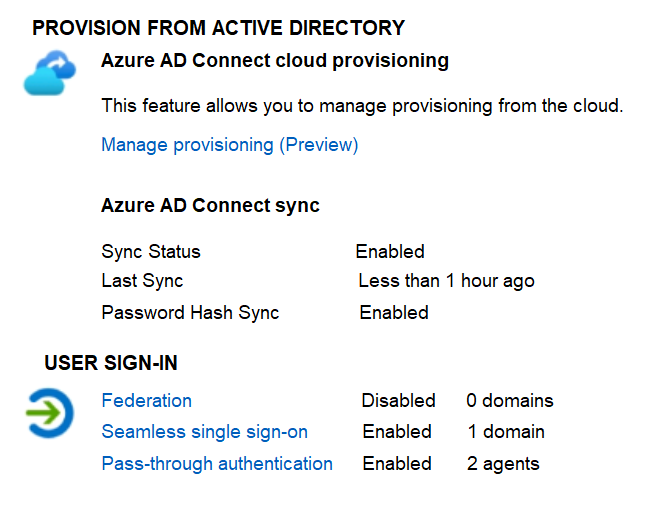
User2 fails to authenticate to Azure AD when signing in as [email protected]
You need to ensure that User2 can access the resources in Azure AD.
Solution: From the Azure Active Directory admin center, you add fabrikam.com as a custom domain. You instruct User2 to sign in as [email protected]
Does this meet the goal?
Answer:
A
The on-premises Active Directory domain is named contoso.com. To enable users to sign on using a different UPN (different domain), you need to add the domain to Microsoft 365 as a custom domain.
Note: This question is part of a series of questions that present the same scenario. Each question in the series contains a unique solution that might meet the stated goals. Some question sets might have more than one correct solution, while others might not have a correct solution.
After you answer a question in this section, you will NOT be able to return to it. As a result, these questions will not appear in the review screen.
Your network contains an on-premises Active Directory domain named contoso.com. The domain contains the users shown in the following table.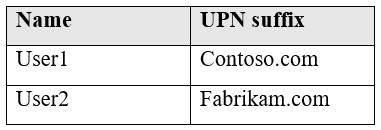
The domain syncs to an Azure Active Directory (Azure AD) tenant named contoso.com as shown in the exhibit.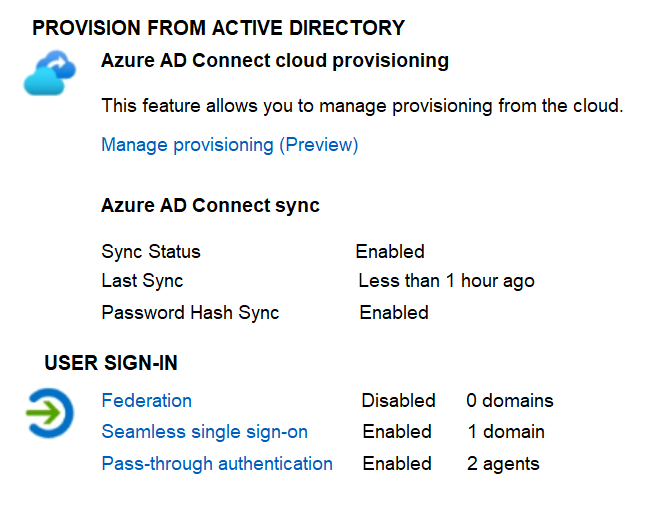
User2 fails to authenticate to Azure AD when signing in as [email protected]
You need to ensure that User2 can access the resources in Azure AD.
Solution: From the on-premises Active Directory domain, you assign User2 the Allow logon locally user right. You instruct User2 to sign in as [email protected]
Does this meet the goal?
Answer:
B
This is not a permissions issue.
The on-premises Active Directory domain is named contoso.com. To enable users to sign on using a different UPN (different domain), you need to add the domain to Microsoft 365 as a custom domain.
Note: This question is part of a series of questions that present the same scenario. Each question in the series contains a unique solution that might meet the stated goals. Some question sets might have more than one correct solution, while others might not have a correct solution.
After you answer a question in this section, you will NOT be able to return to it. As a result, these questions will not appear in the review screen.
Your network contains an on-premises Active Directory domain named contoso.com. The domain contains the users shown in the following table.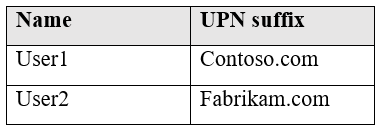
The domain syncs to an Azure Active Directory (Azure AD) tenant named contoso.com as shown in the exhibit.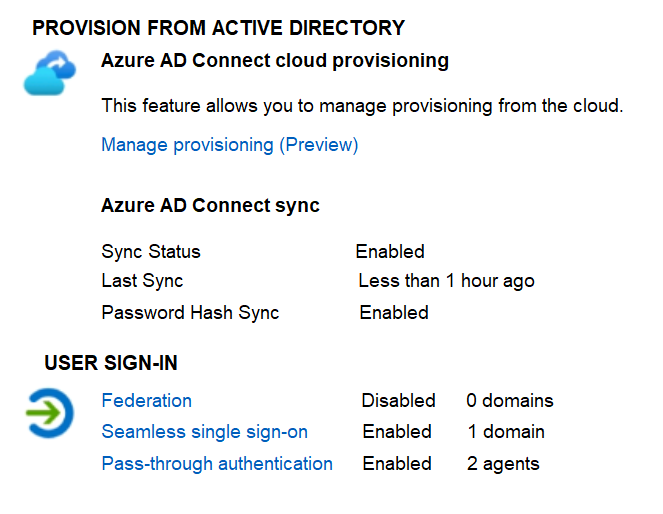
User2 fails to authenticate to Azure AD when signing in as [email protected]
You need to ensure that User2 can access the resources in Azure AD.
Solution: From the on-premises Active Directory domain, you set the UPN suffix for User2 to @contoso.com. You instruct User2 to sign in as [email protected]
Does this meet the goal?
Answer:
A
The on-premises Active Directory domain is named contoso.com. You can enable users to sign on using a different UPN (different domain), by adding the domain to Microsoft 365 as a custom domain. Alternatively, you can configure the user account to use the existing domain (contoso.com).
HOTSPOT -
Your network contains an on-premises Active Directory forest named contoso.com. The forest contains the following domains:
✑ Contoso.com
✑ East.contoso.com
The forest contains the users shown in the following table.
The forest syncs to an Azure Active Directory (Azure AD) tenant named contoso.com as shown in the exhibit.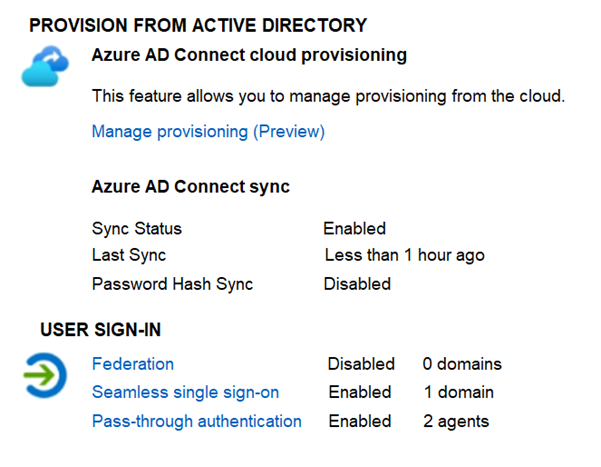
For each of the following statements, select Yes if the statement is true. Otherwise, select No.
NOTE: Each correct selection is worth one point.
Hot Area:
Answer:

Box 1: Yes -
The UPN of user1 is [email protected] so he can authenticate to Azure AD by using the username [email protected]
Box 2: No -
The UPN of user2 is [email protected] so he cannot authenticate to Azure AD by using the username [email protected]
Box 3: No -
The UPN of user3 is [email protected] so he cannot authenticate to Azure AD by using the username [email protected]
Note: This question is part of a series of questions that present the same scenario. Each question in the series contains a unique solution that might meet the stated goals. Some question sets might have more than one correct solution, while others might not have a correct solution.
After you answer a question in this section, you will NOT be able to return to it. As a result, these questions will not appear in the review screen.
Your network contains an on-premises Active Directory domain named contoso.com. The domain contains the users shown in the following table.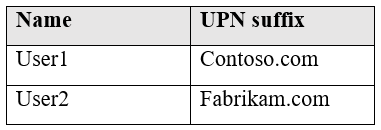
The domain syncs to an Azure Active Directory (Azure AD) tenant named contoso.com as shown in the exhibit.
User2 fails to authenticate to Azure AD when signing in as [email protected]
You need to ensure that User2 can access the resources in Azure AD.
Solution: From the Azure Active Directory admin center, you assign User2 the Security reader role. You instruct User2 to sign in as [email protected]
Does this meet the goal?
Answer:
B
This is not a permissions issue so you do not need to assign the Security Reader role.
The on-premises Active Directory domain is named contoso.com. User2 could sign on as [email protected] but you would first need to change the UPN of
User2 to [email protected]
HOTSPOT -
You have a Microsoft 365 E5 subscription that contains an Azure Active Directory (Azure AD) tenant named contoso.com. The tenant contains a Microsoft
SharePoint Online site named Site1 and the accounts shown in the following table.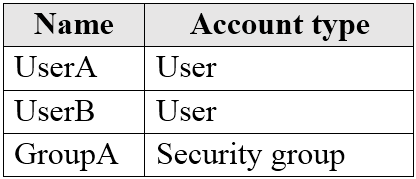
You have an on-premises server named Server1 that contains a folder named Folder1. Folder1 contains the files shown in the following table.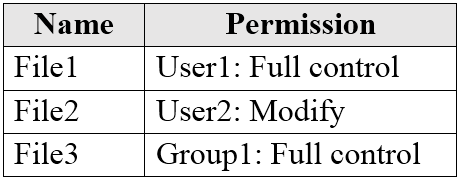
The User1, User2, and Group1 accounts have the security identifiers (SIDs) shown in the following table.
You use the SharePoint Migration Tool to migrate Folder1 to Site1. You preserve the file share permissions and use the following user mapping file.
S-1-5-21-4534338-1127018997-2609994386-1304, [email protected], FALSE
S-1-5-21-4534338-1127018997-2609994386-1228, [email protected], FALSE
S-1-5-21-4534338-1127018997-2609994386-1106, GroupA, TRUE
For each of the following statements, select Yes if the statement is true. Otherwise, select No.
NOTE: Each correct selection is worth one point
Hot Area:
Answer:

You have a DNS zone named contoso.com that contains the following records.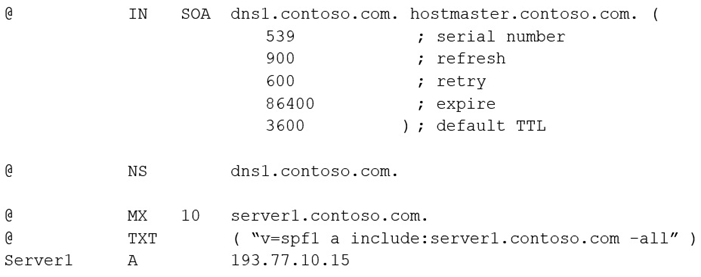
You purchase a Microsoft 365 subscription.
You plan to migrate mailboxes to Microsoft Exchange Online.
You need to configure Sender Policy Framework (SPF) to support Exchange Online.
What should you do?
Answer:
B
Reference:
https://docs.microsoft.com/en-us/microsoft-365/security/office-365-security/set-up-spf-in-office-365-to-help-prevent-spoofing?view=o365-worldwide#next-steps- after-you-set-up-spf-for-office-365
DRAG DROP -
You have a Microsoft 365 subscription and a DNS domain. The domain is hosted by a third-party DNS service.
You plan to add the domain to the subscription.
You need to use Microsoft Exchange Online to send and receive emails for the domain.
Which type of DNS record should you add to the DNS zone of the domain for each task? To answer, drag the appropriate records to the correct tasks. Each record may be used once, more than once, or not at all. You may need to drag the split bar between panes or scroll to view content.
NOTE: Each correct selection is worth one point.
Select and Place:
Answer:

Box 1: MX -
When you update your domain's MX record, all new email for anyone who uses your domain will now come to Microsoft 365.
Box 2: CNAME -
Add CNAME records to connect other service. You can add CNAME records for each service that you want to connect.
Box 3: TXT -
Add or edit an SPF TXT record to help prevent email spam
Reference:
https://docs.microsoft.com/en-us/microsoft-365/admin/get-help-with-domains/create-dns-records-at-any-dns-hosting-provider?view=o365-worldwide